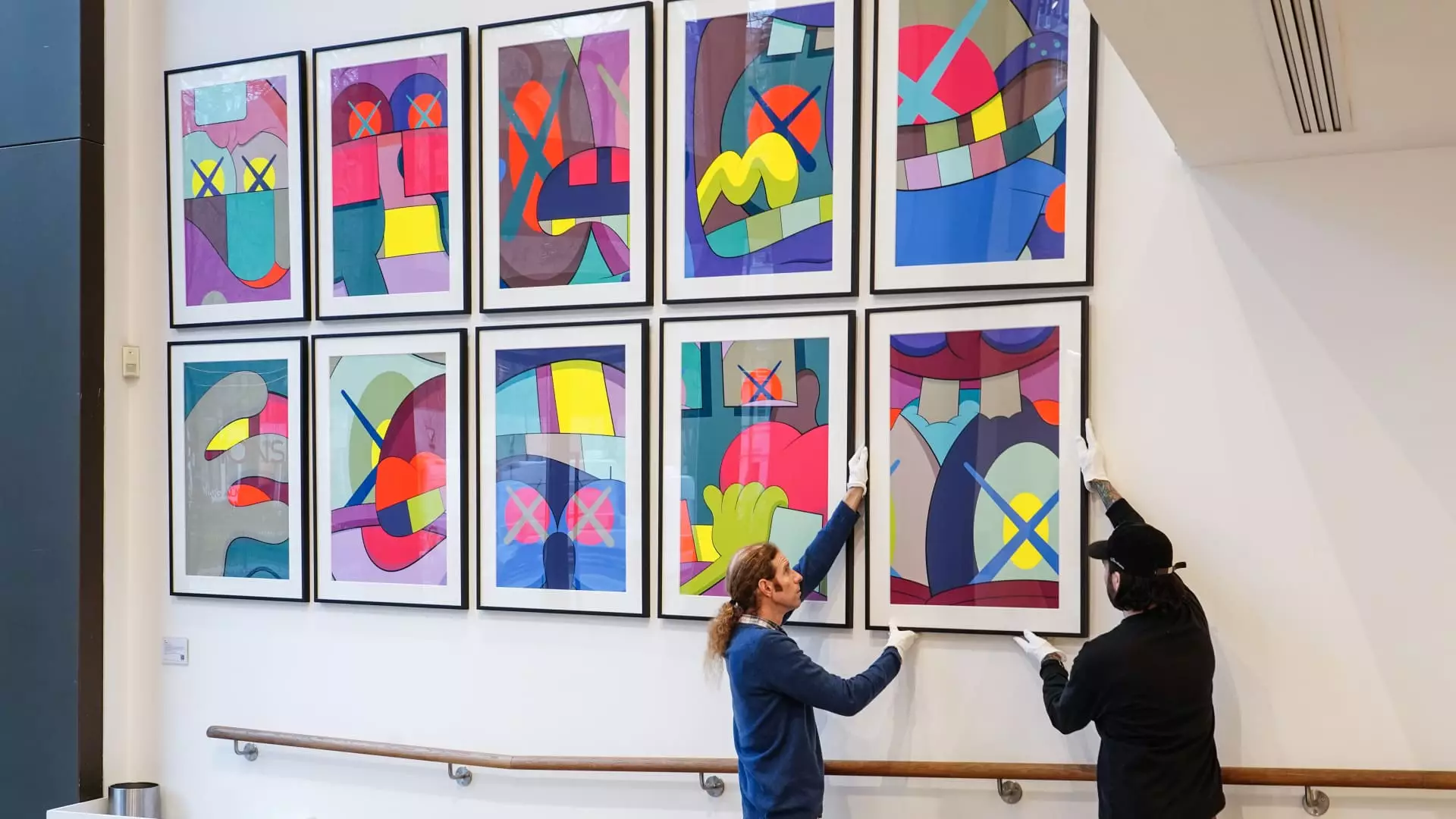For years, the art world had been viewed as a symbol of prosperity and cultural sophistication—a tangible reflection of wealth and status. Yet, recent statistics reveal a disturbing downward trend: auction sales are plummeting for the third consecutive year, with the first half of the current year recording the lowest figures in over a decade. Such decline, surpassing $3 billion from previous highs, signals that the art market may no longer serve as a reliable barometer of wealth or economic vitality as it once did. More troubling is the disconnect between this slowdown and the booming financial assets of the ultra-wealthy. While investors and hedge fund managers revel in soaring stock markets, burgeoning real estate values, and vast accumulations of wealth, the art market’s tumble suggests an underlying shift that cannot be overlooked.
This contradiction exposes the fragility of equating cultural capital with pure financial prosperity. The decline in art sales, especially in the postwar and contemporary segments, is not an isolated event but a reflection of an unsettlingly uncertain global economic landscape. Lingering fears of recession, inflationary pressures squeezing consumer disposable income, and geopolitical tensions disrupt the investor’s confidence, causing them to retreat from alternative assets like high-end art. In essence, the art market is being undermined by converging economic crises that threaten to reset longstanding perceptions about wealth and status.
The Wealth Paradox: Why the Rich Are Still Flourishing While Art Sinks
Despite the gloomy outlook for auction houses, the broader picture of wealth accumulation portrays a starkly different story. The wealthiest Americans have amassed an unprecedented $37 trillion since the start of the pandemic—an astonishing 45% increase that underscores the resilience of financial markets and real estate. Stock indices have impressively gained over 20% in recent years, and the valuation of homes and private businesses continues to soar. Such growth amplifies the gulf between financial assets and tangible collectibles like art, which seem to be losing their allure amid economic turbulence.
Distinguished scholar William Goetzmann’s historical analyses reveal a compelling trend: art prices and financial wealth have historically been intertwined, with rising income fueling art demand. However, in recent years, that connection appears to be fraying. The exponential growth in personal wealth does not appear to be translating into proportional investments in the art world anymore. The question looms: are we witnessing a temporary dip, or is this a fundamental paradigm shift?
The emerging answer points toward a profound transformation in the cultural and generational makeup of wealth. Baby boomers—who drove much of the modern art market—are aging and downsizing, sometimes liquidating entire collections they accumulated over decades. Newer generations, notably millennials and Gen Z, have grown up in a digital ecosystem that values instant gratification, experiential consumption, and different aesthetic preferences. Their disinterest or even skepticism toward traditional art forms signals a potential redefinition of wealth expression, moving away from high-priced paintings to alternative investments like jewelry, watches, or digital assets.
Changing Tastes and a Digital Revolution: The Future of Collecting
The art market’s adaptation to these demographic shifts is palpable. Auction houses like Christie’s and Sotheby’s are actively pivoting toward online sales, luxury collectibles, and lower-priced items, signaling an acknowledgment that the traditional high-end art market may no longer be the primary arena for wealth display. Jewelry, handbags, rare wines, and collectibles under $100,000 are experiencing surges—rather than declining. Jewelry sales, especially among women, have skyrocketed by 68%, indicating a shift toward more personal, portable, and instantly enjoyable luxury items.
Furthermore, the move toward digital platforms has democratized participation, making it easier for younger collectors to bid from their phones and access exclusive items without geographical or financial barriers. The rise of online auctions and the increased relevance of digital assets (NFTs, virtual collectibles) are recognized by auction houses as essential to staying relevant. Yet, even these innovations raise questions about whether they are merely superficial Band-Aids on a fundamentally changing landscape or signs of a genuine cultural shift away from traditional artistic prestige.
What remains to be seen is whether this evolution will sustain or if it’s merely a transient reaction to economic turbulence. The popularity of items under $50,000 and the decline of multi-million-dollar sales suggest a diversification of taste and market segmentation. But the core concern is the possible erosion of art’s status as a symbol of sustained wealth—an icon rooted in tradition, history, and cultural capital—that may no longer resonate with the rising generations increasingly attuned to digital and experiential assets.
Implications for Society and Wealth Inequality
This apparent market dislocation dovetails with broader social issues, especially wealth inequality and cultural access. The booming financial wealth of the top 10% starkly contrasts with the declining significance of art as a wealth symbol. When elite assets are confined to a shrinking class, and art becomes less accessible or appealing to emerging generations, the cultural and social capital associated with high-end collecting risks becoming an exclusive relic of the past.
Moreover, the shift indicates that the traditional markers of wealth—paintings, sculptures, high-end auctions—may be giving way to new forms of status. Digital assets, for example, offer a more inclusive, fluid, and democratized avenue for self-expression and investment, though they also carry new risks and uncertainties.
The future of wealth and cultural expression is now in flux. While the affluent continue to grow wealth through financial markets, their preference for different types of assets—and their evolving tastes—may ultimately redefine what it means to be wealthy. The art market’s decline is less an isolated downfall and more a sign of deeper societal transformations—where traditional symbols give way to new paradigms rooted in technology, accessibility, and shifting cultural values.

